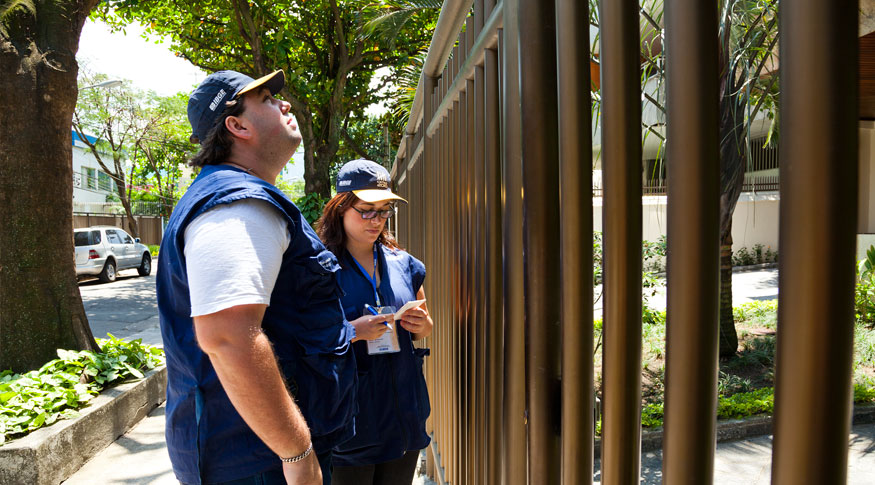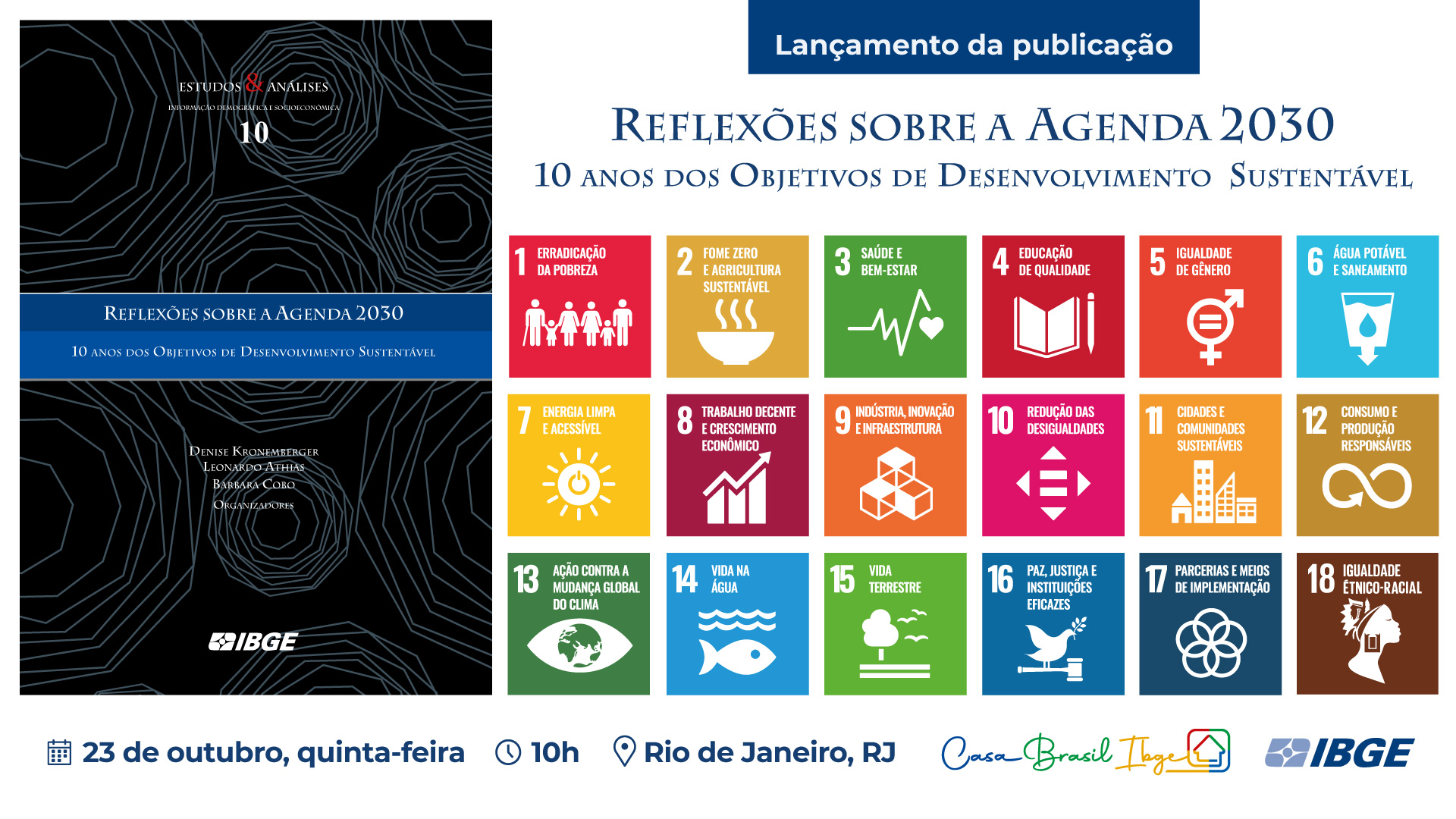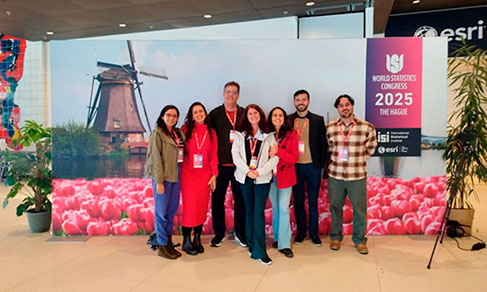Experimental Statistics
In 2021, Brazil had 13.2 million individual micro entrepreneurs (MEIs)
October 04, 2023 10h00 AM | Last Updated: October 10, 2023 11h15 AM
Highlights
- Around 13.2 million persons worked as individual micro entrepreneurs (MEIs) in Brazil in 2021, equivalent to 69.7% of the total number of companies and other organizations and 19.2% of the total number of formally employed persons.
- From 2019 to 2021, there was an increase in the number of MEIs in absolute terms, in terms of participation in the total number of companies and other organizations, and in total employed personnel.
- The number of MEI employers has not yet returned to pre-pandemic levels. In 2019, there were 146.3 thousand MEIs with employees, while in 2021 the number fell to 104.9 thousand.
- Around 50.2% of MEIs worked in the Services sector and 29.3% of them in Trade and repair of motor vehicles and motorcycles.
- The activities in which MEIs had the greatest participation in the total number of formal employees were Other services (60.5%) and Lodging and food (43.1%).
- Hairdressers and other beauty treatment activities were the CNAE 2.0 class that brought together the largest portion of the country's total MEIs: 9.1% or 1.2 million. Next came Retail trade of apparel and accessories (7.1%), and Restaurants and other food and beverage service establishments (6.3%).
- 38.0% of MEIs carried out the activity in their own home. Information and communication activities (48.5%); Education (47.8%); and Transportation, storage and mailing (45.3%) were the ones with the greatest number of MEIs in this condition.
- 14.3% of MEIs had previous experience in the same economic activity, and in MEIs for Maintenance and repair of motor vehicles, this percentage is 23.8%.
- The majority of MEIs were men (53.3%), of white color or race (47.6%), were between 30 and 39 years of age (30.3%) and did not have a higher education degree (86.7% ).
- In 2021, of the 13.2 million MEIs, 9.2 million (70.0%) were in the formal job market between 2009 and 2021. Among these, 37.7% had up to 3 years of length of service accounted for in the period.
- Among MEIs with a termination date prior to MEI membership, 62.2% were terminated by the employer or for just cause.
- The previous occupations with the highest number of active MEIs were retail salesperson (154.3 thousand MEIs), office assistant (111.1 thousand) and administrative assistant (99.5 thousand).
- In 2021, the MEI entry rate was 22.0%, equivalent to 2.9 million, equivalent to almost all births. In the same period, the exit rate was 6.5%, equivalent to the exit of 857 thousand MEIs. The result was a positive balance of 2.1 million MEIs.
- The states with the greatest number of MEIs were São Paulo (3.6 million), Rio de Janeiro (1.5 million), Minas Gerais (1.5 million), Paraná (825.8 thousand) and Rio Grande do Sul (799.1 thousand).

The IBGE Statistics of the Register of Individual Micro Entrepreneurs reveal that, in 2021, there were 13.2 million individual micro entrepreneurs (MEIs) in Brazil. This number corresponds to 69.7% of the total number of companies and other organizations and 19.2% of the total number of formally employed persons, MEIs included. There were increases compared to 2019, when the country had 9.6 million MEIs, or 64.7% of the total number of companies and other organizations and 15.2% of the total number of formally employed persons. The total number of formal employed persons is the sum of the number of MEIs, their employees and the employed persons of the IBGE Central Register of Enterprises (CEMPRE).
Carried out for the first time at the IBGE, this survey is classified as Experimental Statistics and was carried out exclusively from different sources of administrative records. “MEIs have been growing more and more in the country’s formal job market, showing increasing evolution. Most of them are concentrated in the Southeast Region”, explains Thiego Ferreira, survey analyst.
According to current legislation, MEIs can have up to one employee. When comparing data from 2021 and 2019, it was found that the number of MEI employers has not yet returned to pre-Covid-19 levels. In 2019, there were 146.3 thousand MEIs with employees, while in 2021 the number reduced to 104.9 thousand.
Around half of MEIs (50.2%) were present in the Services sector in 2021. Trade; repair of motor vehicles and motorcycles accounted for 29.3%, this activity being the one with the largest number of MEI employees (48.3%).
Hairdressers and other beauty treatment activities predominate among MEIs
Among the 15 most representative classes of the National Classification of Economic Activities (CNAE) 2.0, Hairdressing and other beauty treatment activities stood out in 2021, accounting for 9.1% of the total MEIs (1.2 million). Next came Retail trade of apparel and accessories, with 939.6 thousand MEIs (7.1%), and Restaurants and other food and beverage service establishments, with 827.3 thousand (6.3%).
In 2021, of the total of 673 CNAE 2.0 classes, MEIs were present in 206. More than half of the MEIs (55.7%) are present in the first 15 classes and almost 75% in the first 30.
Around 72.1% active MEIs in 2021 joined in the last five years. Only those affiliated in 2021 (2.9 million) represent around 1/5 of all MEIs.
Most of the MEIs who worked from home were in the information and communication area
Of the total universe of MEIs, 38.0% carry out the activity in their own home. The activities of Information and communication (48.5%), Education (47.8%) and Transportation, storage and mailing (45.3%) have the highest proportions of MEIs who carried out the activity at their home.
On the other hand, in the activities of Mining and quarrying industry and Lodging and food, only 10.2% and 31.3%, respectively, registered their MEI with their home address.
53.3% of MEIs are men and 30.3% are aged between 30 and 39
In 2021, 53.3% of the total MEIs were men, while 46.7% were women. When comparing the sex distribution of MEIs with that of the universe of companies and other CEMPRE organizations, in which female participation was 44.9% against 55.1% of male participation among salaried employees, it is possible to see that women have greater representation in micro entrepreneurship.
Just over a fifth of MEIs, 22.0%, were made up of young people up to 29 years of age. The majority of them, 30.3%, were between 30 and 39 years old; 24.5% were between 40 and 49 years old; and 23.3%, were aged 50 and over. On average, MEIs were 40.7 years old. Women were 40.8 years old and men were 40.6 years old.
Only 0.6% of MEIs were not Brazilian. The majority of foreigners were from countries that share borders Brazil. Bolivia (11.7 thousand), Venezuela (6.1 thousand), Colombia (5.5 thousand) and Argentina (5.5 thousand) led this ranking.
Most MEIs have a white hetero-classification and do not have a higher degree
Of the total of 13.2 million MEIs in 2021, 9.2 million had information on color/race and education in the administrative records used as sources. Within this group, 4.4 million self-declared as white, which corresponds to 47.6% of the total MEIs present in these records. The second largest group is made up of brown persons, who add up to nearly 2.9 million MEIs (31.0%). Next, are black persons corresponding to 440.7 thousand (4.8%). Yellows correspond to 62.7 thousand MEIs and Indigenous persons amount to 18.7 thousand (0.7% and 0.2%, respectively).
Regarding education, women had a higher level compared to men. While 9.5% of men had higher education in 2021, women with a higher degree were 18.2%. Among men, 9.9% were illiterate or had incomplete primary education, while among women this percentage was 5.3%.
70% of MEIs were in the formal market between 2009 and 2021
In 2021, of the 13.2 million MEIs, 9.2 million (or 70% of them) were in the formal job market at some point between 2009 and 2021. There are also those who started or restarted a formal employment after becoming a MEI, a figure equivalent to 3.1 million.
“This number might indicate an entrepreneur who saw in MEI an opportunity to gain experience with their own company first and then enter the job market, as well as one who realized the challenges of opening their own business and decided to go back to the job market while keeping the enterprise”, assesses Thiego Gonçalves Ferreira.
Of the total number of MEIs affiliated in 2021 and with previous experience in the formal job market since 2009, 37.7% have up to 3 years of formal service.
The study shows that 14.9% (2.0 million) of MEIs in 2021 also had a job on December 31 of the same year, an important increase compared to 2014, when only 5.6% were in the same situation.
“The indicator of MEIs who are also employees can help us understand the use of MEI as a means to undertake, as it is not expected that a high proportion of MEIs have a formal job with a high workload competing with their own entrepreneurial activity”, highlights the analyst.
62.2% of MEIs who were terminated prior to their affiliation were terminated by the employer
The publication also presents, for MEIs affiliated in 2021 and with a termination date prior to membership, the causes of termination. The great majority of dismissals are caused by the employer or are terminations for cause, 62.2%. Followed by 22.6%, caused by the “Employee”, as it involves termination for no cause, at the initiative of the employee or dismissal from a permanent position at the request of the employee.
“The termination cause in the formal sector may be related not only to the desire to undertake, but also to business performance. This cause, depending on the perspective, can also be seen as a proxy for identifying the entrepreneur's feeling of opportunity, as well as their need to undertake”, points out Mr. Ferreira.
Predominant previous occupation among active MEIs was retail salesperson
In an analysis of the number of MEIs affiliated in 2021, it appears that the most frequent previous occupations, based on the Brazilian Classification of Occupations, were Retail Salesperson (154.3 thousand MEIs), Office Assistant (111, 1 thousand) and Administrative Assistant (99.5 thousand).
When related to the economic segment of the MEI, it is worth highlighting that MEIs who had previous experience in the occupations of Bricklayer and Construction Worker were more likely to open a MEI in the Construction activity (76.7% and 35.8%, respectively), of Truck driver (regional routes) in the Transportation sector (53.6%) and of Cook-general and Cafeteria attendant, 44.9% and 26.4%, respectively, worked in the Lodging and food activity.
The activity Maintenance and repair of motor vehicles stands out for being the one with the highest percentage of MEIs with previous experience in the same sector (23.8%), followed by Finishing works (22.9%), Restaurants and other establishments of food and beverage services (20.8%), and Road cargo transportation (20.0%).
Among the MEIs who were in the formal job market in the last thirteen years, 87.4% came from business entities, 7.4% from public administration and 5.2% from non-profit entities. Furthermore, 28.4% came from large-sized entities, with 500 or more salaried persons.
In 2021 there was a positive balance of 2.1 million MEIs
In 2021, the MEI entry rate was 22.0%, equivalent to 2.9 million, equivalent to almost the total births. In the same period, the exit rate was 6.5%, equivalent to the exit of 857 thousand. The result was a positive balance of 2.1 million MEIs.
The highest entry rates occurred in Agriculture, production, fishing and aquaculture (39.3%) and in Services (23.5%). Among the exits, Trade, repair of motor vehicles and motorcycles (7.0%) has the highest rate among the three most representative sectors. The number of MEIs in 2021 grew 18.4% compared to 2020, with a highlight to Services (20.4%).
The survival rate of MEIs in the 5th year of operation was 51.6%, on average. The younger the MEI is when opening the enterprise, the lower the survival rate. Among MEIs up to 29 years old, this rate was 41.3%, compared to 61.2% for those aged 40 to 49 years old. Brazilian MEIs have a lower survival rate (51.6%) than foreign ones (55.1%). The highest survival rates were in Construction (55.8%) and General Industry (54.4%).
Southeast and South Regions concentrate the largest number of MEIs
Regionally, the Southeast and South of the country stood out for having the highest concentrations of MEIs. São Paulo was the state with the most MEIs, 3.6 million (27.2%), followed by Rio de Janeiro, with 1.5 million (11.5%), Minas Gerais, with 1.5 million (11.1 %), Paraná, with 825.8 thousand (6.3%) and Rio Grande do Sul, with 799.1 thousand (6.1%).
Rio de Janeiro (26.0%) was the Federation Unit with the highest proportion of MEIs in relation to the total number of formally employed persons, followed by Espírito Santo (24.8%). The lowest participation occurred in the Federal District (10.9%), Acre (14.3%) and Maranhão (15.8%).
More about the survey
The Statistics of the Register of Individual Micro Entrepreneurs are being released for the first time and are labeled Experimental Statistics. The information disclosed here and other issues are answered directly in the study, which is organized according to thematic indicators by characteristics of the company, sociodemographic characteristics of the entrepreneur, previous experience in the formal job market and business demography.




















